Super Rugby returned to (some of) our screens this weekend gone as the New Zealand version, Aotearoa Super Rugby, returned with two cracking games played in front of two pumping crowds. The Australian version is a few weeks behind, as we have with most things throughout this COVID19 period, with a new domestic competition incorporating some intriguing new laws, enough to build the anticipation among Aussie rugby fans.
With the tournament still weeks away there’s a lot of time for new developments to play out before that first game, but why not take a look at the current status of some of the key elements of the event.
The Draw:
Steve Lenthall published the draw on release last week. It is pretty much as we’d expect once we had confirmation the Sunwolves wouldn’t be involved. The Force are back to make a five-team tournament, which gives us a ten-week ‘home and away’ season.
It’s not a true home and away season of course, with the Force still a little uncertain as to if they will get to play their full allotment of home games, in WA. Much will depend on that state’s government guidelines around their borders.
We don’t know where the Tahs are going to play their home games either. One assumes because they have to check if there are any stadiums in the state that don’t need significant upgrades. Much could be reliant on what size of, if any, crowds are permitted in venue. If crowds are permitted, based on a percentage of the capacity as suggested, then NSWRU may look to take their games to ANZ Stadium to maximise the numbers attending.
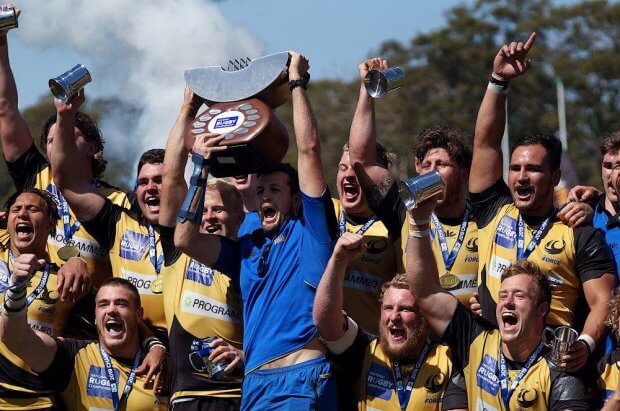
The Laws:
As with the Aotearoa competition, the Aussie version has its own Law Variations, as listed here with notes specific to that law.
When an attacking player carrying the ball is held up in the in-goal or knocks the ball on play restarts with a goal line drop-out
When a kick enters the in-goal area and is forced by the defending team play restarts with a goal line drop-out
- Drop-out is taken anywhere on or behind the defending team’s goal line. Sanction: 5m scrum in line with the place where the kick was taken
- Must be taken without delay. Sanction: Free-kick
- Must cross the goal line and travel 5m. Sanction: The non-kicking team has the option of the kick being retaken or a 5m scrum in line with the place where the kick was taken
- The defence must be back 5m
- An opponent must not charge over the 5m line before the ball is kicked. Sanction: Free-kick
- If the ball crosses the 5m line but the bounces back play continues
A kick originating in the attacking 22m area cannot be marked by the defending team within their own 22m area. The kick can however be marked within the defending team’s in-goal area and play restarts with a 22m line drop- out
- To claim a mark, a player must:
- Have a least one foot on or behind their own goal line when catching the ball or when landing having caught it in the air; and
- Catch a ball that has reached the plane of the goal line directly from an opponent’s kick before it touches the ground or another player; and
- Simultaneously call “mark”
- A player may claim a mark even if the ball hits a goal post or crossbar before being caught
- When a mark is called correctly, the referee immediately stops the game and awards a 22m restart to the team in possession
- Any player may take the 22m restart
Red Card – A red carded player can be replaced after 20min
- If all substitutions have been used the Red Carded player cannot be replaced
50/22 – A kick taken from within the defending team’s 50m area that travels into touch within the opposition’s 22m area having first bounced in the field of play results in a lineout throw to the kicking team
- Criteria
- The defending team did not take the ball into their own 50m area; or
- A tackle, ruck or maul takes places within the 50m area; or
- An opponent touched the ball within the 50m area
- Clarifications
- The above does not apply if a player kicks the ball from a free-kick awarded in the 50m area
- The 50m area includes the defending team’s in-goal area
22/50 – A kick taken from within the defending team’s 22m area that travels into touch within the opposition’s 50m area having first bounced in the field of play results in a lineout throw to the kicking team
- Criteria
- The defending team did not take the ball into their own 22m area; or
- A tackle, ruck or maul takes places within the 22m area; or
- An opponent touched the ball within the 22m area
- Clarifications
- The above does not apply if a player kicks the ball from a free-kick awarded in the 22
- The 22m area includes the defending team’s in-goal area
Super Time – (2 x 5min periods of extra time) in the event of a drawn game after regulation time where the first points scored wins the match for the scoring team
- First points scored in Super Time wins match
- No conversions of tries
- Losing team receives bonus point for being within 7 points
- Team that kicks off match kicks off first period of Super Time
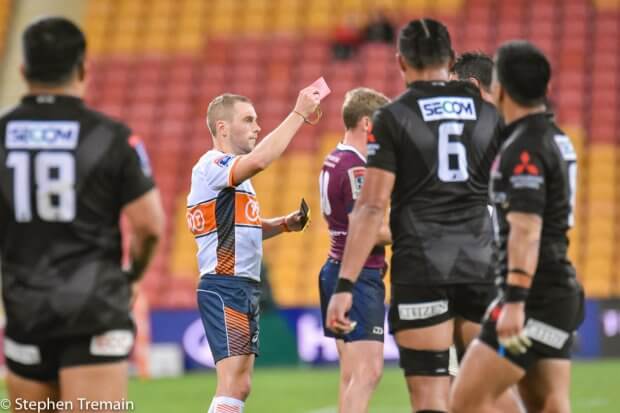
The goal line drop out and the 50-22/22-50 were both part of the NRC last year, albeit without the same level of criteria built around it. The mark rule should apparently be renamed the Matt rule, as it was pushed by Matt Toomua as part of a law review committee that seemingly didn’t meet too often. The final law variation, regarding the replacement of a Red Card, may not even be seen this season.
While not being a law variation, the word out of HQ is that match officials will be told to focus on policing the breakdown, limit the number of scrum resets, and get tough on cynical and repeated infringements to speed up play. These has been a similar focus in New Zealand with both games featuring a high number of penalties particularly around the ruck.
The Squads:
The Reds:
The high-profile departure of Izack Rodda, Harry Hockings and Isaac Lucas was the biggest player related news over the break. Frankly, I still can’t believe we won’t see these players were maroon again. A damn shame. Henry Speight is off next year, but is expected to play a game or two at least.
The loss of a couple of two-foot locks, one a Wallaby and the other a Wallaby to be, is a massive blow. Ryan Smith, from the Brothers club, has been brought into the squad as a replacement but we are likely to see Lukhan Salakai-Loto relinquish his #6 jersey and move in tight to partner Angus Blyth at lock. More significantly this could see captain Liam Wright moved to blindside with Fraser McReight getting the 7 jersey to make one the most exciting backrow combinations, with Harry Wilson, in the country. And one that could be very dangerous under the new ruck interpretations.
Possible Team: 1 JP Smith 2 Alex Mafi 3 Taniela Tupou 4 Lukhan Salakai-Loto 5 Angus Blyth 6 Liam Wright [c] 7 Fraser McReight 8 Harry Wilson 9 Tate McDermott 10 James O’Connor 11 Filipo Daugunu 12 Hamish Stewart 13 Hunter Paisami 14 Henry Speight 15 Jock Campbell
16 Brandon Paenga-Amosa 17 Dane Zander 18 Josh Nasser 19 Michael Wood 20 Angus Scott-Young 21 Scott Maloula 22 Bryce Hegarty 23 Chris Feauia-Sautia
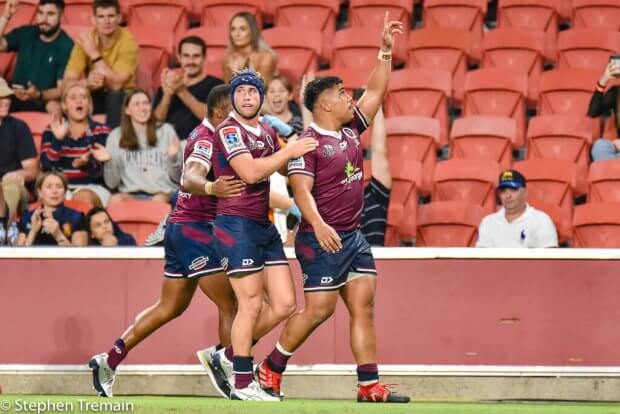
The Waratahs:
Not a lot of news around the Waratah’s off-season. We know there will be one face we won’t be seeing run out in sky-blue again – that of veteran hooker Damien Fitzpatrick. The highly respected rake has been forced into retirement in a blow to a NSW team that has, in the previous the other season earlier this year, struggled to show much direction or application. No replacement has been announced with Robbie Abel most likely to wear the 2 jersey, at least initially.
Possible Team: 1 Angus Bell 2 Robbie Abel 3 Harry Johnson-Holmes 4 Jed Holloway 5 Rob Simmons [c] 6 Ned Hanigan 7 Michael Hooper 8 Jack Dempsey 9 Jake Gordon 10 Will Harrison 11 Mark Nawaqanitawase 12 Karmichael Hunt, 13 Lalakai Foketi 14 Jack Maddocks 15 Kurtley Beale
16 Andrew Tuala 17 Tom Robertson 18 Tetera Faulkner 19 Will Harris 20 Lachie Swinton 21 Mitch Short 22 Tepai Moeroa 23 Joey Walton
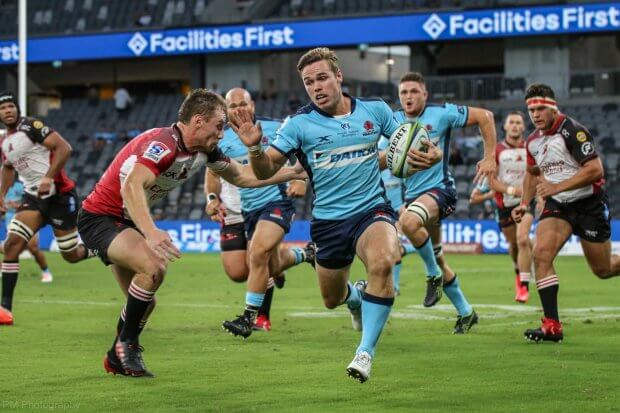
The Brumbies:
As you’d expect from the previous conference leaders, the Brumbies are pretty rock solid. They have welcome back former Brumby, and most recently of the Sunwolves, Ben Hyne. Hyne comes in as injury cover for the injured Cadeyrn Neville who is expected to miss at least the start of the Super Rugby competition.
Possible Team: 1 James Slipper 2 Folau Faingaa 3 Allan Alaalatoa [c] 4 Murray Douglas 5 Darcy Swain 6 Rob Valetini 7 Will Miller 8 Peter Samu 9 Joe Powell 10 Noah Loloesio 11 Tom Wright 12 Irae Simone 13 Tevita Kuridrani 14 Solomone Kata 15 Tom Banks
16 Connal McInerney 17 Scott Sio 18 Tom Ross 19 Ben Hyne 20 Lachie McCaffrey 21 Ryan Lonergan 22 Bayley Kuenzle 23 Andy Muirhead
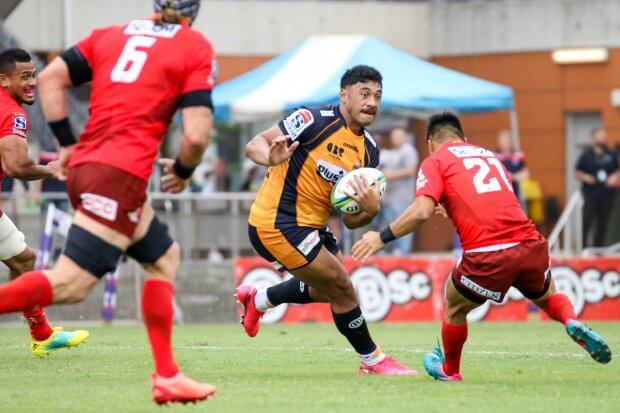
The Rebels:
Some intriguing signings down in Melbourne as our Australian 7s players look for some game time with the chances of a World 7s Series in the near future being slim. Former captain Lewis Holland, young-gun Lachie Anderson and the powerful Jeral Skelton have all been signed. Kiwi rugby has long been able to manage the transitioning of players between the two versions of the game, so it will be interesting to see if these three can match up. All have an excellent breadth of skills and could be absolute stars, with the younger Anderson and Skelton particularly exciting.
Possible Team: 1 Matt Gibbon 2 Jordan Uelese 3 Jermaine Ainsley 4 Luke Jones 5 Matt Philip 6 Angus Cottrell 7 Richard Hardwick 8 Isi Naisirani 9 Ryan Louwrens 10 Matt Toomua [c] 11 Marika Koroibete 12 Reece Hodge 13 Campbell Magnay 14 Andrew Kellaway 15 Dane Haylett-Petty
16 Anaru Rangi 17 Pone Fa’amausili 18 Ruan Smith 19 Ross Haylett-Petty 20 Michael Wells 21 Frank Lomani 22 Andrew Deegan 23 Lachlan Anderson
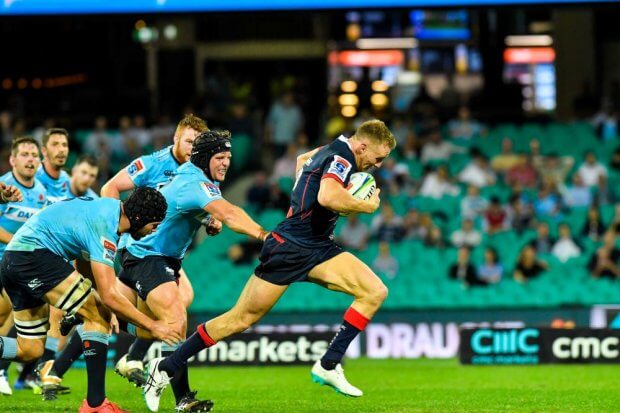
The Force:
One suspects the signings haven’t stopped for the Force, after their recent announcements of Wallabies Kyle Godwin and Greg Holmes plus former Force-ites Jono Lance and Ollie Atkins. They might need a couple more big guns in key positions (Rodda, Hocking and Lucas would be a fair start) to really trouble the competition, but they’ll bring passion and purpose to the competition that runs the risk of seeming like a meaningless gap filler.
Possible Team: 1 Chris Heiberg 2 Andrew Ready 3 Greg Holmes 4 Ollie Atkins 5 Fergus Lee-Warner 6 Tevin Ferris 7 Chris Alcock 8 Brynard Stander 9 Ian Prior [c] 10 Jono Lance 11 Byron Ralston 12 Nick Jooste 13 Kyle Godwin 14 Jonah Placid 15 Jack McGregor
16 Heath Tessmann 17 Tom Sheminant 18 Kieran Longbottom 19 Jeremy Thrush 20 Henry Stowers 21 Jacob Abel 22 Henry Taefu 23 Pama Fou
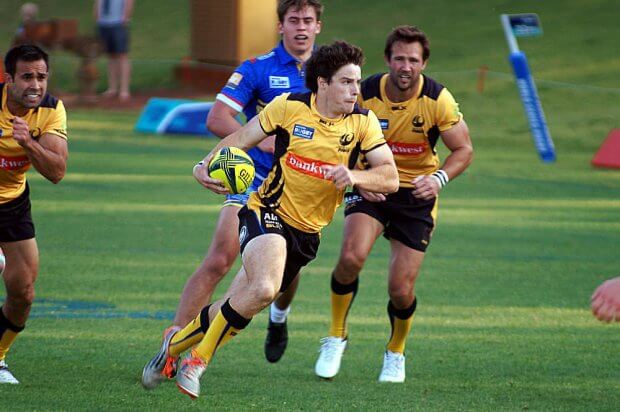
Predictions:
I don’t see any reason we won’t see much of the same as the previous Super Rugby season. The Brumbies are absolute favorites for the competition and their canny ruck master, Lord Laurie Fisher will be all over the interpretation of the breakdown. My beloved Reds showed they were trending up at a good time, but what impact the drama around the ‘Picone 3’ has on their game is anyone’s guess. I am backing them to finish top two, with the final spot in the top three a battle between the frustrating Rebels, the disappointing Waratahs and the up against it Force.
Hope:
Moving on from what I THINK will happen, this is what I HOPE happens. I HOPE the players and coaches look less to the law variations to speed up the game, and look more towards themselves. I HOPE they take it upon themselves to realise that fast and skillful rugby is just as much fun to play as it is to watch. And, by God, do we need to have our teams that both our players want to stay and play but our fans want to come and watch.
Which brings me to my other HOPE. I HOPE the fans get behind it. It’s time to stop grumbling about Raelene, and Clyne, and Wiggs, and RUPA, and Cheika, and News Ltd, and Israel, and Picone (yes, I note the hypocrisy) and all the other shitty things that have happened in Australian Rugby of late. I HOPE the fans, firstly, CAN get to the games and, secondly, DO get to the games. The crowds in New Zealand were awesome last weekend. We may not have the same freedom to fill our stadiums, but I sure do bloody well HOPE we get some people in them – as many as we can – and they are bloody well enjoy themselves while they are there.


